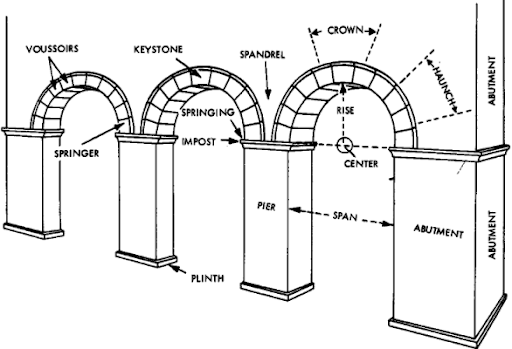
We help clients develop, implement and manage their EHS program to ensure its effective integration into their workflow, culminating in maximal workforce performance.

We help clients develop, implement and manage their EHS program to ensure its effective integration into their workflow, culminating in maximal workforce performance.

Legislation (Federal and Provincial)
Safety committees
Machine guarding
Lock-Out / Tag-Out
Pre-Start Health & Safety Reviews
Job hazard analysis
and more …
Notice most EHS courses are designed and delivered in a way that simply throws up a collection of factoids (the voussoir) on the screen that participants are expected to learn by memorizing the tidbits of information. Afterwards, they are given an “exam”, which essentially is filled with softball-type questions that is meant to “test” their knowledge of the course material.
It does not matter whether the topic is legislation, hazard identification, hazard control, risk assessments or environmental protection. The style is generally the same and to make matters worse, much of the content is simply filler material. That style is not an effective way of teaching people environmental, health and safety. Participants simply end up going through the motions of sitting in a safety course so that they can fulfill whatever compliance requirements are expected of them.
Our courses are designed to teach the underlying mechanics (the keystone) of EHS. There really are only four basic (yet fundamental) skills needed in this field and once mastered, it greatly simplifies the entire endeavour because those skills hold all the seemingly disparate pieces of EHS together. Participants will gain clarity on what must be done, who must do it and ultimately how it needs to be done.
The fundamental focus of all our courses is to teach people how to think and not necessarily what to think.

The objective is to estimate the levels of risk associated with any task in the workplace based on the sources of hazards present and what control measures (if any) are in place. When the risks have been scored, the tasks are prioritized based on their hazard-level and addressed accordingly. The assessment lets employers know which dangers to address first and where to focus resources both in the short and long term.
Identification of hazard sources
Task breakdown and analysis
Evaluation of control measures

The objective is to measure the levels of worker exposure to physical, chemical and/or biological agents and to determine whether or not it is in compliance with the occupational health and safety act, its regulations and any standards that have been adopted.
Occupational hygiene sampling can be a laborious process and should not be delved into lightly. Careful and diligent planning is necessary so that the results obtained from the exercise are meaningful, interpretable and ultimately are useful in determining what to do next.
Indoor air quality
Noise mapping, surveys and dosimetry
Mould and microbial sampling
Chemical exposure assessment

Organizations sometimes find themselves overwhelmed with managing environmental, health and safety.
We, therefore, provide services to our clients to help lighten this load so that they can focus their valuable time, effort and resources on the core elements of their business with the peace of mind that the safety and well-being of their workforce is being attended to.
Let us help you run things more efficiently at your workplace. After all, as the saying goes, time is money.
Site safety inspections and audits
Policies, Programs, Procedures review and preparation
Project safety planning

Human capital is this intangible collection of resources possessed by individuals within the workforce and its cumulative sum is vital to an organization’s success. It includes things like knowledge, training, experience, attitudes, judgment, work-ethic and health.
Office workstation evaluation
Task hazard assessment and design